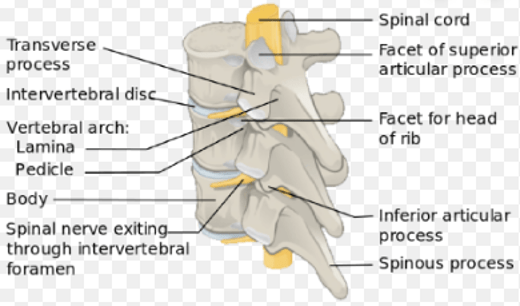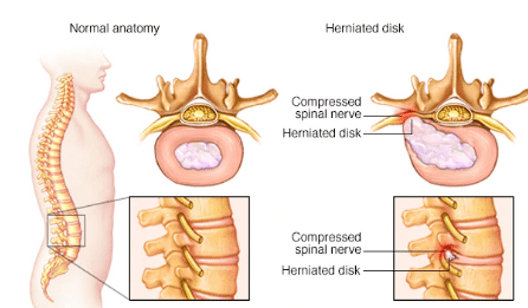Most people will experience back pain at least once in their life. The back pain may be due to sore muscles from daily activities like exercising, or it may be pain in the spine from serious conditions. Spinal pain often leads to pain in the neck or legs. In severe cases, it can lead to emergency department visits.
The spinal cord is protected by the bones of the spine itself. The spinal cord runs from the brain down the spine, with branches of nerves into your limbs and organs. Each nerve is associated with specific parts of the body so understanding where the pain is coming from can be helpful in diagnosing the injury.
The lumbar spine, or lower part of the spine, is responsible for all sensation and motor in the legs. At the very bottom of the lumbar is the sacrum or tailbone. If you have persistent back and leg pain, or numbness, lasting 12 weeks (about 3 months), or if you have worsening pain, numbness, or weakness in your leg at any time, see your doctor for help.

This image is diagram of the spine. The yellow part, running down the middle, is the spinal cord and is surrounded by bones to protect it. The image also shows the spinal nerve exits that allow nerves to connect to various parts of the muscles and organs to perform bodily functions.

The image with the outlines of the people outlines the different sections of the body controlled by the different nerve endings. The multi-colored body shows the different sections of nerve endings that control various functions of the body while the image on the right shows the different muscle groups that are controlled by nerve endings.
What Causes Intervertebral Disc Herniation?
Disc herniation is a condition where the middle part of a spinal disc, which is soft, pushes through a crack in the outer bone casing. The spinal cord only has so much space, so when the disc is displaced, it causes compression of the surrounding nerves. Herniated discs can occur in any part of the spine, but it is most common in the lower back or lumbar spine.
There can be multiple factors causing a disc herniation. The most obvious one is some sort of trauma to the spine. If you fall or have something fall on you, you can injure the spine which could lead to disc herniation. Another cause could be lumbar disc degeneration which is the natural part of aging. Over 80% of the population will experience some form of degeneration by the age of 65. Degeneration happens when the disc naturally wears out, which means disc herniation can be caused by much less trauma or simple overuse of a worn-out disc. Repetitive movements can also cause disc degeneration, especially up-down movements that stretch and compress the spine repeatedly. Lastly, genetics plays a significant role in disc herniation. Disc herniation is the number one cause of pinched nerves.

This image compares the normal anatomy of a spine to one that has a herniated disc. In the image showing a herniated disc, you can see where the nerve is being compressed and causing pain.
What Causes Leg Pain or Numbness?
A pinched nerve in your lower back, also known as stenosis, is the top cause of leg pain or leg numbness. The location of this pinched nerve will directly affect where you are feeling the pain or numbness in your leg. The most common structure that causes compression of the nerve is the intravertebral disc being out of position, but another cause could be osteophytes, or new bone growth, in the wrong place which can lead to pinched nerves. Unstable vertebrae caused by a deformity at birth or spinal trauma can lead to shifts in the discs which in turn can pinch the nerve.
Is it Hip or Back Pain?
True hip pain will usually present itself in the groin on the affected side. Most of the time, if it is a pain from the back, it will either be going down the leg towards the foot, usually past the knee, or it will be isolated within the back itself. If the pain is coming from both, it usually presents itself in a band-like pattern across the back and into the outside of both hips and usually is a result of arthritis in the joints.
How to Prevent Pain and Numbness in the Legs
Daily stretching and strengthening exercises are the number one way to prevent these injuries. Take 10 minutes every day to practice core strengthening movements along with some light stretching. Maintaining a flexible and strong core in some ways can decompress the nerves and allow them to move easier with less pressure or less pain. Avoid heavy lifting, twisting, or deep bending motions. Instead of twisting at your waist to move, turn your entire body. Make sure to bend at your knees instead of your waist and keep heavy objects close to your body to lessen the chance of injury to your discs or spine.
The first treatment options, especially when the pain is not too severe, are physical therapy or injections. Both non-invasive options can help relieve the pain or numbness you may feel. If the symptoms persist for an extended period or the pain is overbearing, it may be time to discuss surgery options with your doctor.

